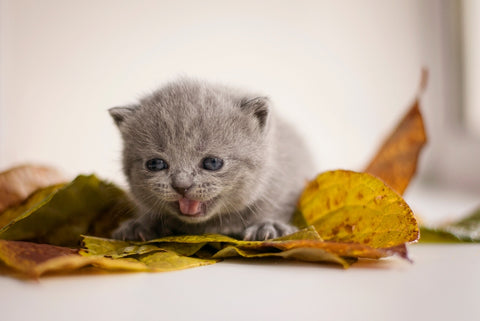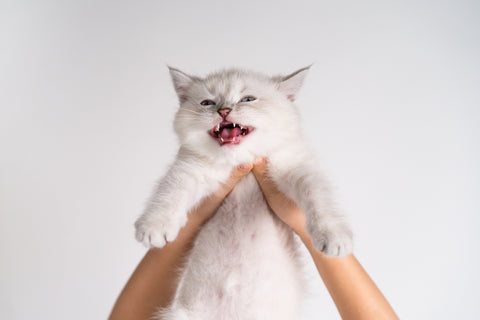The Anatomy of Meows: Decoding Your Cat's Unique Language
Cats communicate with their owners and each other through a variety of vocalizations, and understanding the nuances of these meows can help you better connect with your feline friend. While it's important to note that individual cats may have unique variations in their vocalizations, there are some general patterns that can be observed.
A Guide to Understanding Your Cat Friend's Language

Types of Cat Meows
Standard Meow:
This is the typical, everyday meow. It can convey a range of emotions, including greetings, requests for attention, or expressions of contentment.
Purr:
Purring is a complex behavior that can indicate contentment, relaxation, or even pain or distress. Cats may purr when they are happy and comfortable, but they might also purr when they are anxious or unwell.
Chirps and Chatters:
Some cats make a chirping or chattering sound, especially when they are observing birds or other prey animals. This behavior may be a mix of excitement and frustration at not being able to catch the target.
Trills:
Trills are a mix of a meow and a purr. Cats often trill to greet their owners or other cats in a friendly manner. It's a sign of happiness and can be a way for a cat to express affection.
Hissing and Growling:
These are defensive sounds that cats make when they feel threatened or scared. It's a way for them to communicate that they are not comfortable with the current situation and may react aggressively if pushed.
Yowls:
Yowling is a more intense and prolonged version of a meow. Cats may yowl when they are in heat, feeling territorial, or in pain. If your cat suddenly starts yowling excessively, it's a good idea to consult with a veterinarian.
Silent Meows:
Some cats meow without making any sound. This is often seen in cats that have learned that their owners respond to their meows, and they use silent meows to get attention.
Demanding Meows:
Cats can develop meowing patterns to express specific needs, such as hunger or the desire to go outside. Understanding the context of the meow can help you address your cat's needs.
Gurgling or Chirping Meows:
These unusual sounds are often associated with excitement, usually when a cat is watching birds or engaging in play.
Whining Meows:
Whining meows can indicate dissatisfaction or a desire for something. It's essential to pay attention to the accompanying body language to understand the specific message.
Kneading Meows:
When a cat kneads with their paws while meowing, it often signifies contentment and relaxation. This behavior is reminiscent of kittenhood when they kneaded their mother's belly to stimulate milk flow.
Attention-Seeking Meows:
Cats may meow to get your attention. This could be because they want to play, be petted, or simply spend time with you. Responding to these meows positively reinforces your cat's behavior.
Midnight Serenade Meows:
Some cats become more vocal, especially during the night. This behavior can be due to various reasons, such as loneliness, wanting to play, or even changes in the environment. Providing interactive toys or spending extra playtime before bedtime might help reduce these nighttime meows.
Anxious or Distressed Meows:
If your cat is meowing excessively and exhibits signs of distress like pacing, hiding, or changes in litter box behavior, it could indicate stress, illness, or discomfort. Consulting with a veterinarian is crucial in such cases.
Greeting Meows:
Cats often greet their owners with meows when they come home. These are friendly and welcoming vocalizations, expressing happiness at your return.
Older Cats and Altered Vocalizations:
As cats age, their meows might change. Older cats may become more vocal due to various factors like sensory decline or cognitive changes. If you notice a significant shift in your cat's vocal behavior, it's advisable to consult with a vet.
Playful Meows:
During play, cats may emit high-pitched meows. This vocalization is a part of their excitement and enjoyment. It's often accompanied by other playful behaviors like pouncing and chasing.
Multi-Pitch Meows:
Some cats have a wide range of vocalizations, using different pitches and tones to convey various messages. Pay attention to the nuances to understand your cat's specific communication style.
Displeased Meows:
If your cat is not happy with a situation, they might express their displeasure through grumbling or low-pitched meows. This can occur during activities like bathing or nail trimming.
Food-Related Meows:
Cats can develop specific meows related to mealtime. These may range from gentle reminders to more insistent and demanding meows, especially if they are accustomed to a feeding routine.
Remember that a cat's vocalizations are just one aspect of their communication. Body language, facial expressions, and overall behavior provide additional clues about their feelings and needs. By paying attention to your cat's meows and other forms of communication, you can strengthen your bond and respond more effectively to their needs.

What to Do When Your Cat Stops Meowing
If your cat is typically vocal and suddenly stops meowing, it could be a cause for concern. While some cats are naturally quieter than others, a significant change in vocalization patterns might indicate an underlying issue. Here are some reasons why a cat might stop meowing:
Health Issues:
Cats may become quiet if they are not feeling well. Pain, discomfort, or illness could be the reason for the sudden silence. If your cat's behavior changes, especially if accompanied by other signs like lethargy, changes in appetite, or litter box issues, it's crucial to consult with a veterinarian.
Stress or Anxiety:
Changes in the environment, the introduction of new pets, or alterations to their routine can cause stress in cats. In some cases, a stressed cat may become quieter. Creating a calm and stable environment, providing hiding spots, and offering familiar comforts can help alleviate stress.
Age-Related Changes:
Older cats may experience changes in behavior, including a decrease in vocalization. This could be due to factors such as hearing loss or cognitive decline. Regular veterinary check-ups can help monitor your cat's health as they age.
Comfort and Contentment:
Some cats are naturally less vocal than others, and if your cat is healthy, happy, and content, the absence of meowing might simply be part of their personality.
Environmental Changes:
Cats may adjust their behavior based on their surroundings. If there are significant changes in the household, such as moving to a new home or the addition of new family members, your cat might need time to adapt.
Sensory Changes:
Cats rely on their senses, and changes in vision or hearing may affect their behavior, including vocalization. If you suspect sensory decline, consult with your vet to assess your cat's overall health.
Socialization Factors:
Some cats are naturally more solitary and less vocal. If your cat has always been on the quieter side and there are no other concerning symptoms, this might be a normal variation in behavior.
If you're concerned about your cat's sudden change in vocalization or any other behavioral changes, it's best to consult with a veterinarian. Regular veterinary check-ups are essential to ensure your cat's overall health and well-being. Monitoring for any signs of distress, illness, or discomfort and addressing them promptly will help keep your feline companion happy and healthy.
Leave a comment
